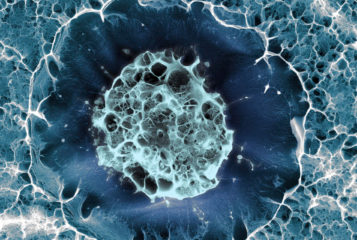Human induced pluripotent stem (iPS) cells have been transformed into lung and airway cells for the first time.
In the short-term, it is expected that the cells will be used to model lung disease in the laboratory and screen for therapeutic drugs.
The cells produced by the technique have features similar to alveoli (air sac) cells that are found in healthy lungs. The manufactured lung cells produced surfactant, a substance vital in maintaining the alveoli and also involved in repairing damaged lungs. This means that the cells may be useful in treating lung disease in the future.
Dr Hans-Willem Snoeck, the study leader, spoke about the ultimate aims of the study: 'We hope to use this technology to make an autologous lung graft - that is, transplants that use a patient's own skin cells to generate functional lung tissue. This is important because lung transplants have a particularly poor prognosis'.
The team previously coaxed iPS cells to produce cells of the anterior foregut endoderm, the precursor to the thyroid, trachea and lungs, before fine-tuning them into working lung and airway cells. Six types of cells were produced , most of which resembled type 2 alveolar epithelial cells.
The potential of stem cells in regenerative therapies in the lung was shown by a study in 2011 (see BioNews 632) which demonstrated that stem cells which are naturally present in the lungs are capable of rebuilding alveoli.
The study, published in Nature Biotechnology, widens the range of tissue types that can be produced from iPS cells, which includes liver, heart, pancreas and nerve cells.






Leave a Reply
You must be logged in to post a comment.